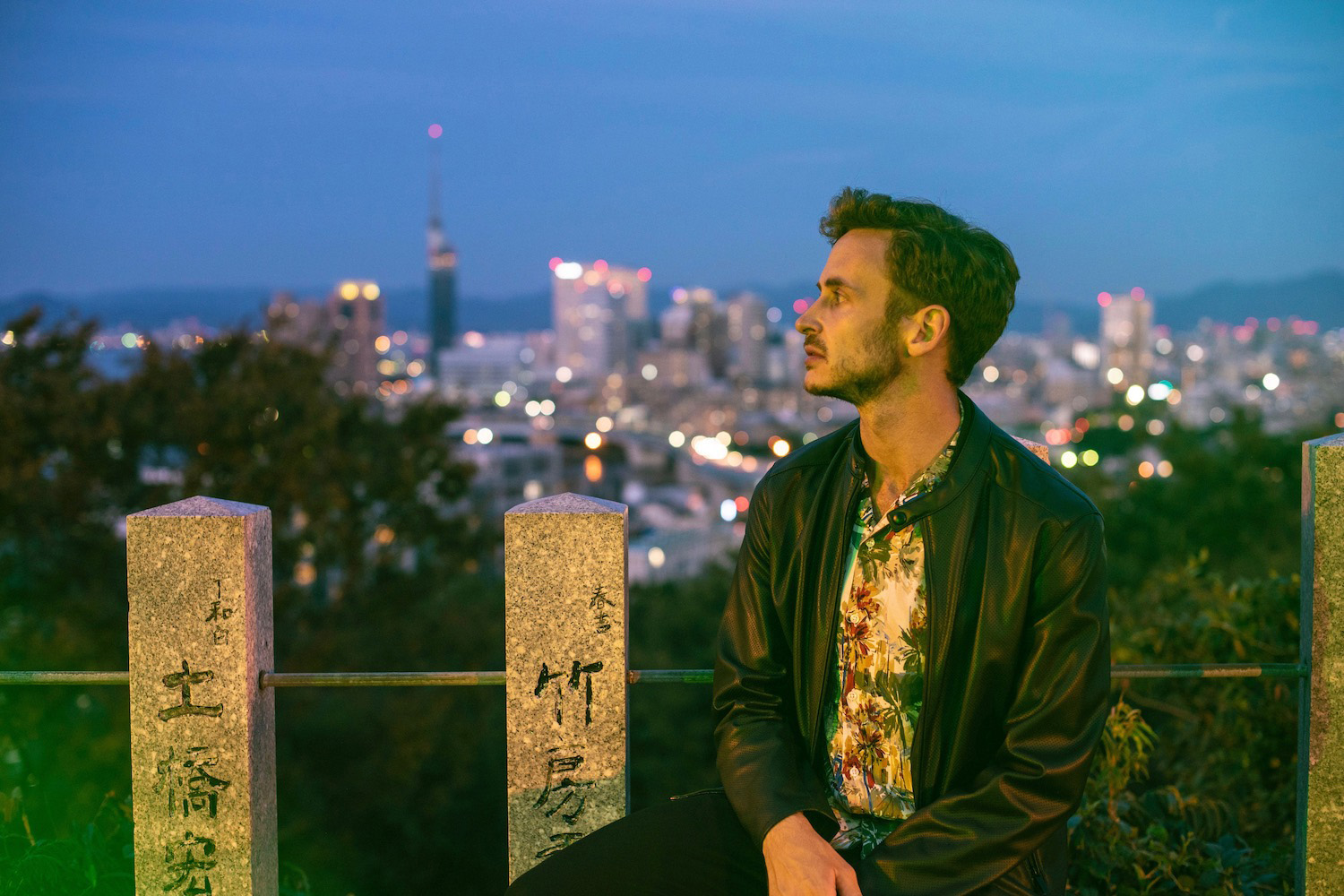The Fukuoka yatai seemed a million miles away as I stumbled into the shower Monday morning at half past three. Not having been able to run on account of my tight schedule, I was still half asleep as the hot water streamed onto my face.
I’d been reading about the fact that romantic encounters produce the same brain chemical as drug use the night before. This caused the song “Addicted to Love” to creep into my head, and suddenly made me realize that perhaps the patently horrifying styling of the female dancers in the video was not just a consequence of the 80s.
But this is a blog post about food stalls in Fukuoka, not the fact that my own love addiction nearly de-railed this entire Kyushu trip. (Or the fact that I might have sent a long and dramatic text to my quasi-ex on the way to Taoyuan Airport before the sun rose, my consciousness equally muted by sleep deprivation and residual dopamine.)
Fewer Geishas
While on the plane and fighting back tears as I listened to the deeper cuts of Feist’s “Metals” album and scrutinized the typo-ridden LINE message I’d sent in my sleepy stupor, I realized I had left behind an essential piece of travel gear: The SD-to-USB-C adapter my purchase of a new MacBook Pro had permanently necessitated. Fukuoka had an Apple Store, so this wasn’t an existential omission, though it would end up informing the way my approximately eight daylight hours in the city progressed.
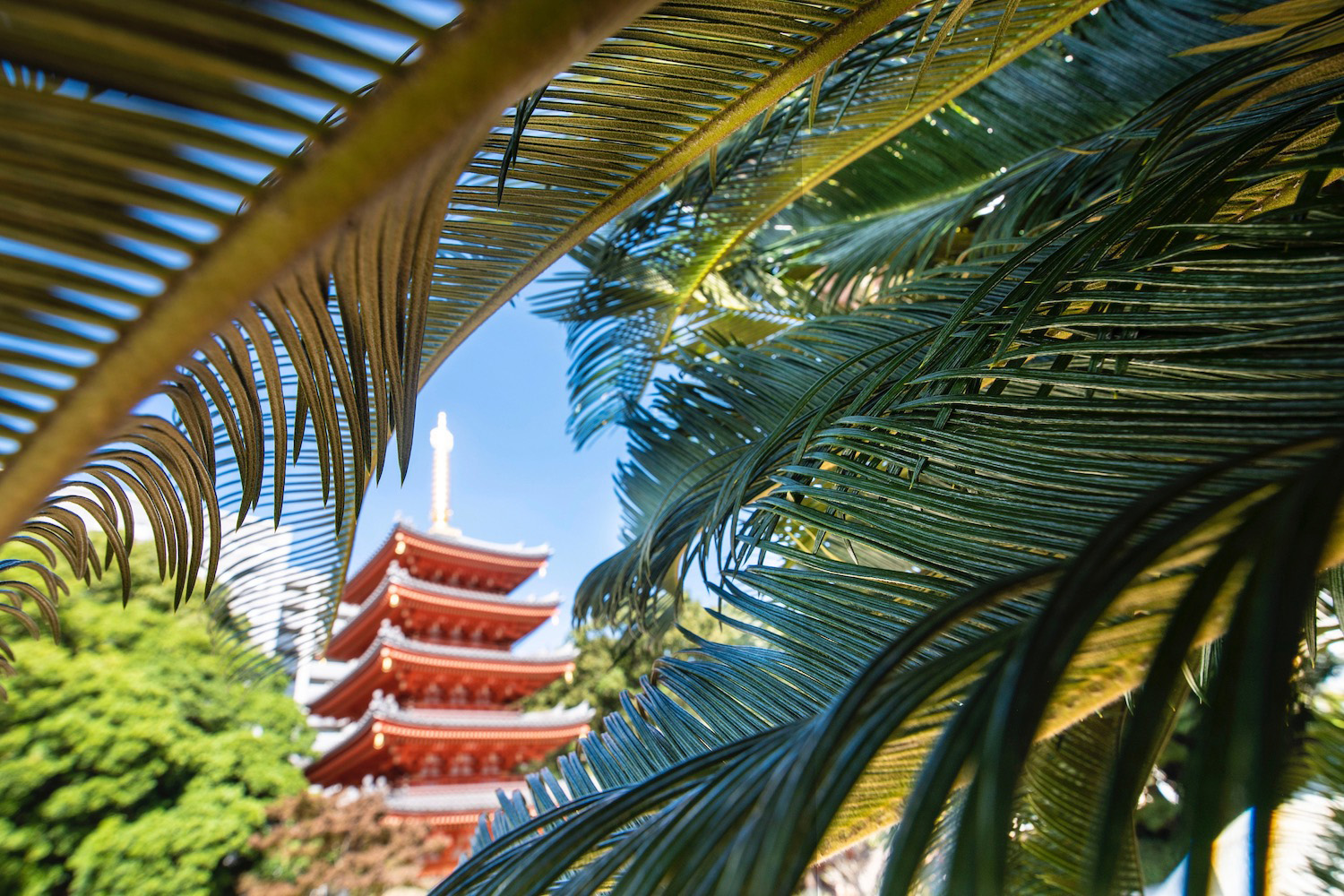
After getting a taxi into the city (Fukuoka is the only place in Japan I do this, on account of the international terminal’s close proximity to Hakata Station), I dropped my bags at the hotel and headed immediately to Gion. As I headed up the stairs of Exit 2 toward Tocho-ji, I naturally wondered how Fukuoka’s would compare to Kyoto’s, apart from the near certainty of there being fewer Geishas.
Would I be a bad Japan traveler (let alone a Japan travel blogger) if I gave the nod to Fukuoka here? While it’s true that neither the lush, green gardens of Shofuku-ji nor Tochi-ji’s vermillion five-tiered pagoda are quite as iconic as, say, Yasaka Shrine or Shijo-dori, the juxtaposition of the surprisingly traditional architecture with Fukuoka’s otherwise modern cityscape was alluring, to say nothing of how abjectly empty of tourists it all was.
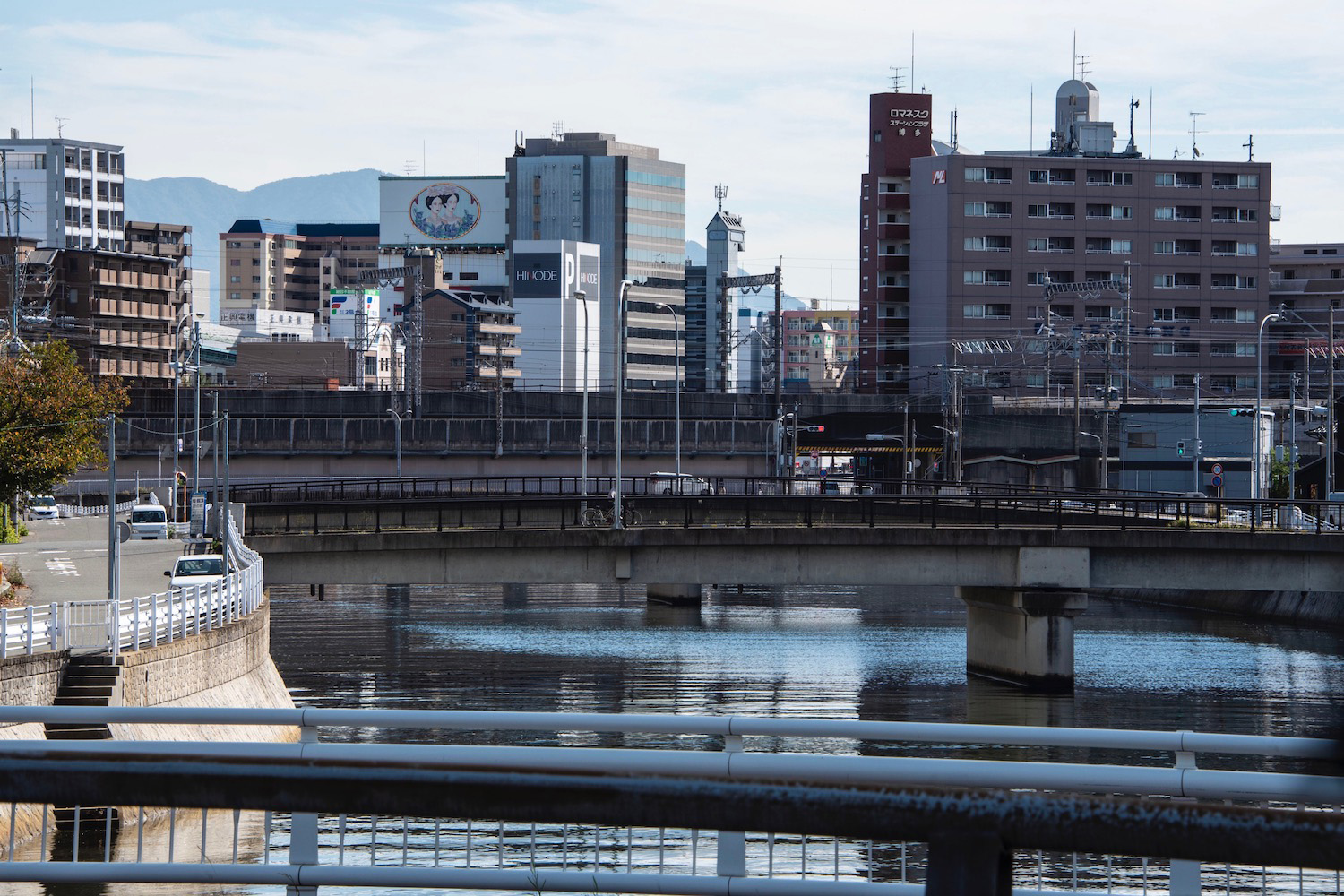
As I made my way westward in the general direction of Kushida Shrine, I passed an anonymous-looking ramen shop, which reminded me that the yatai were still looming over the end of this day. The Fukuoka yatai, and that damned adapter I’d forgotten in my dopamine haze.
Smooth-Talking
Traipsing through the grounds of Kushida Shrine, which if I’m honest is far less impressive than the far less-popular sacred sites further east in Gion, I noticed the presence of several half-rotted pomegranates on the ground. My initial instinct was to wonder whether there was some relevant symbology I could weave into this or another article, but at that particular moment Bonnie Raitt’s “Angel from Montgomery” popped into my head. It made a surprisingly good soundtrack for my walk to Fukuoka’s recently-relocated Apple Store, finishing just as I approached its futuristic glass facade.
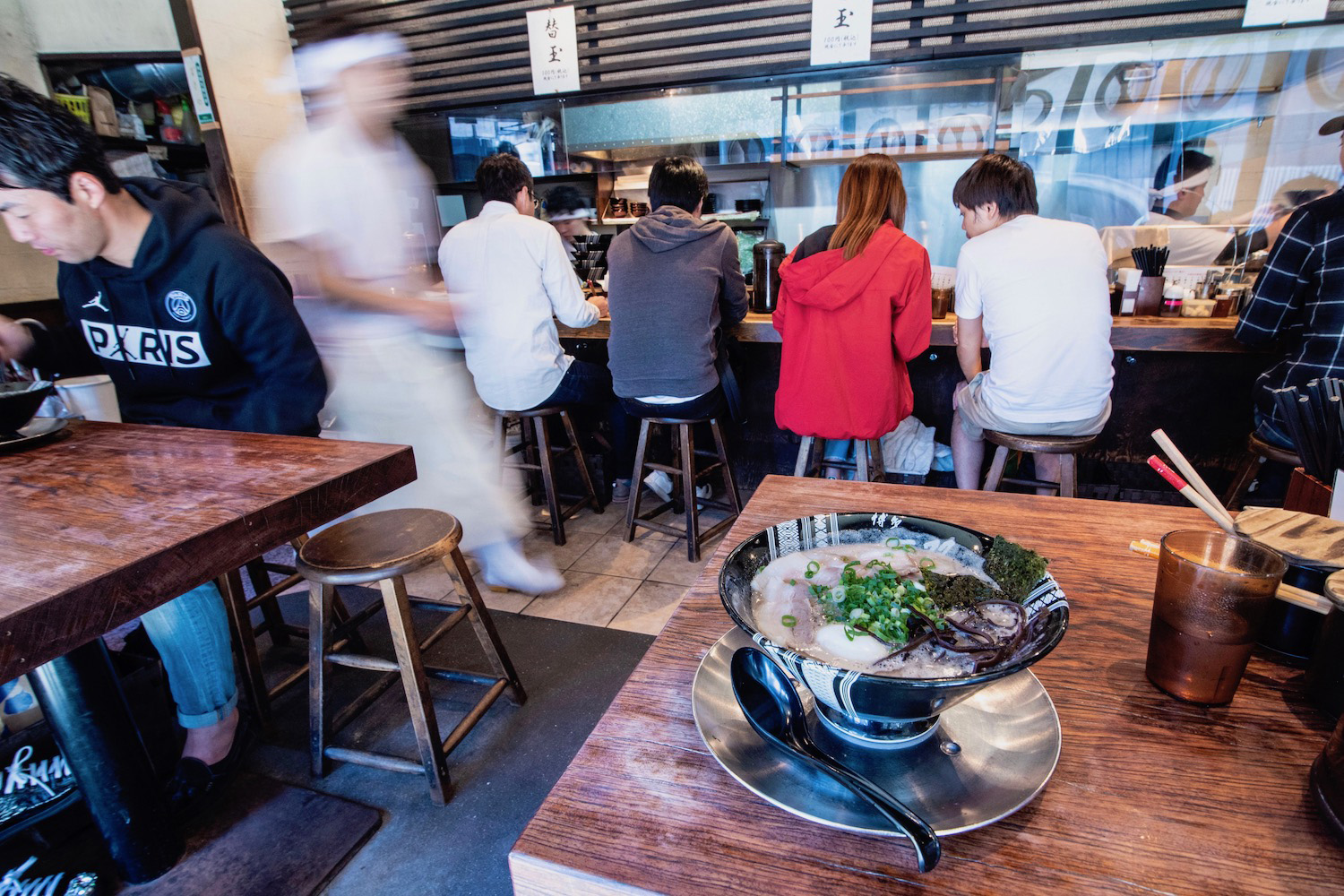
“You’re not from around here,” the handsome but slightly chubby Italian man said as he approached me, snatching the device I was about to purchase from my hand and scanning it with one of the iPhone cash registers that never stop seeming weird to me. I wouldn’t go so far as to call our brief interaction a flirtation, though it’s always nice to receive smiles and direct eye contact from a smooth-talking Roman, especially when you’re dropping 50 bucks on something you literally already own.
Lourenco had been right that I wasn’t from around Fukuoka, though the city’s geography had remained more or less familiar to me since my last visitor in early 2017. This was true eeven as I next headed to Shofu-en, which like the Fukuoka yatai hadn’t been on my previous Fukuoka itinerary.
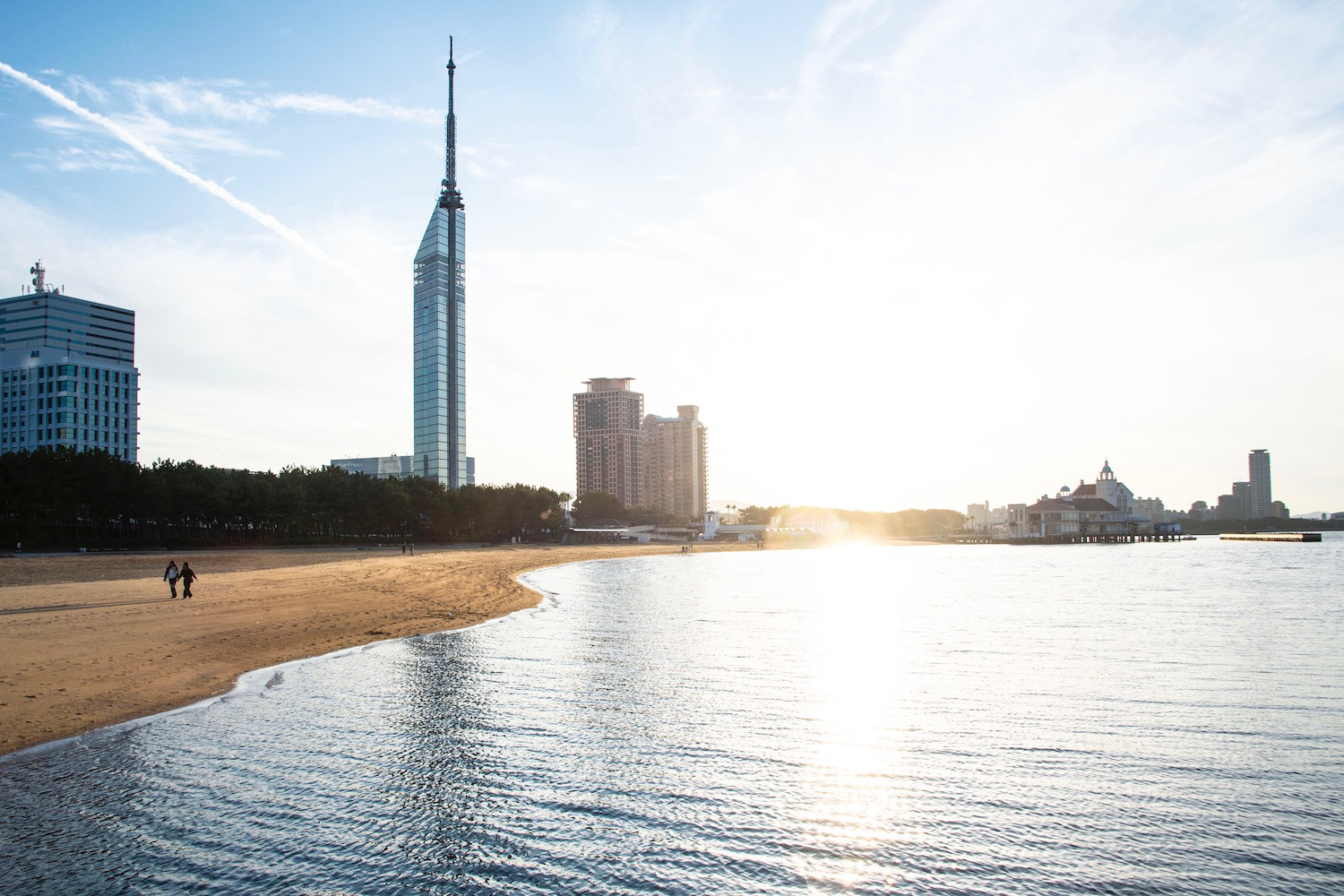
To be sure, I still had to get back to my hotel to check-in; on the way there, I did decide to fuel up on some Hakata-style Tonkotsu ramen. I feared (or maybe I was manifesting it) that by the time I arrived to the yatai I’d be more in the mood to take pictures than to eat. I hadn’t thought about the boy or the portions of my heart I poured out to him in a while, so I thought I’d check to see if he’d read my message—he had.
Queen’s Head
The Fukuoka yatai were going to be new to me, so I thought I’d enjoy a throwback afternoon during the remaining hours of daylight. Ohori Park and the ruins of Fukuoka Castle proved far less crowded on this late October afternoon than they’d been at what should’ve been the peak of sakura season two unseasonably cold late Marches ago, but if I’m honest both were pretty lackluster still—before I’d thought it was just the late mankai.
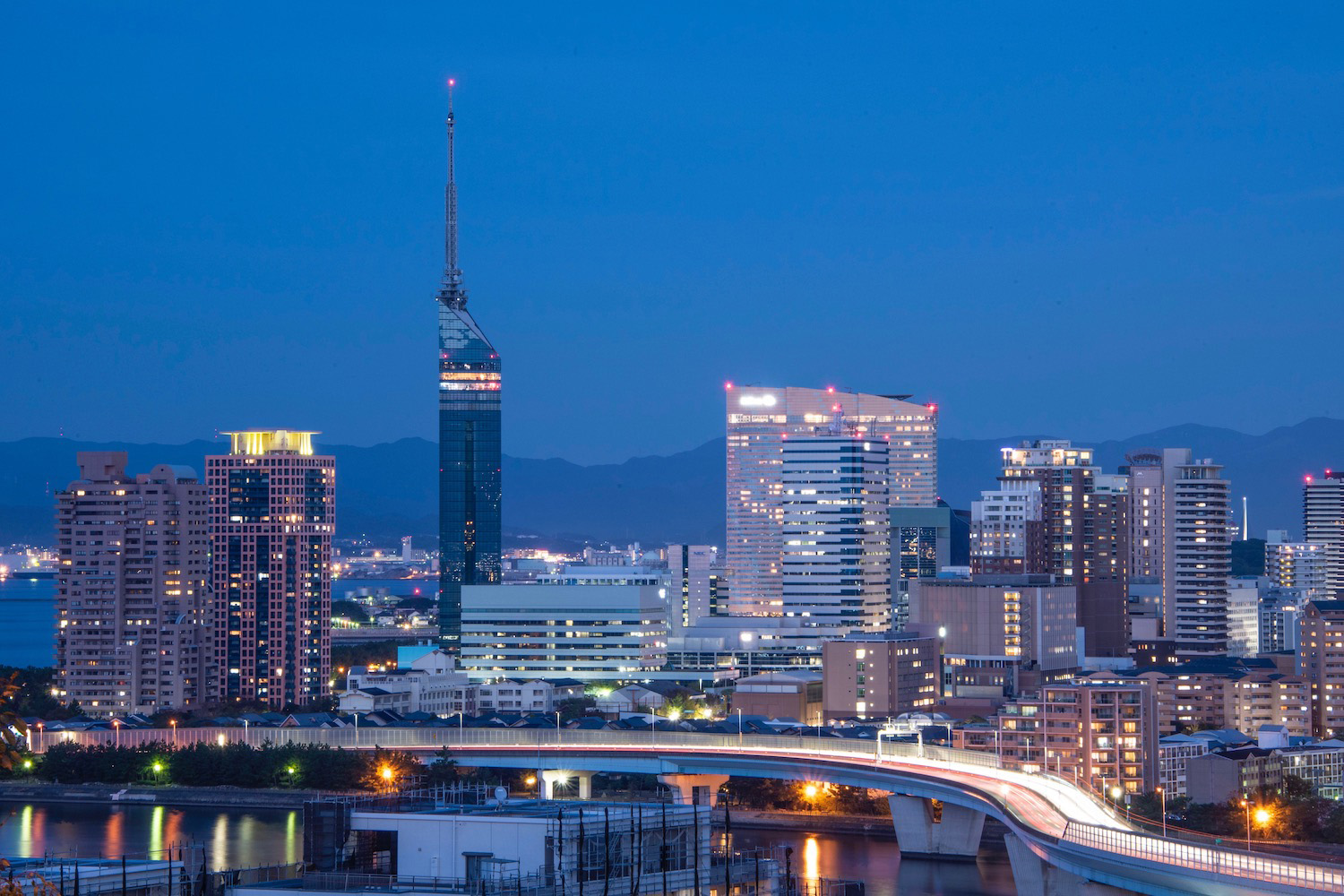
Likewise, while I was happy that the sky was clear this time as I made my way down to Momochi Seaside Park to admire Fukuoka Tower rising above the sea, it was difficult to deny how mediocre the beach was, even bathed in the resplendent light of the Golden Hour. I put my Air Pods back on as I raced toward Atago Shrine, which I was trying (in vain, it turned out) to reach before sunset.
I summited the viewpoint just as the skyline began lighting up, and as the orange and purple wisps I’d admired on the way up were fading to the cornflower and midnight of the blue hour. As the the bridge of “Bittersweet Melodies” came on, I recalled a strange sticker I’d seen on a utility pole en route to Shofu-en.
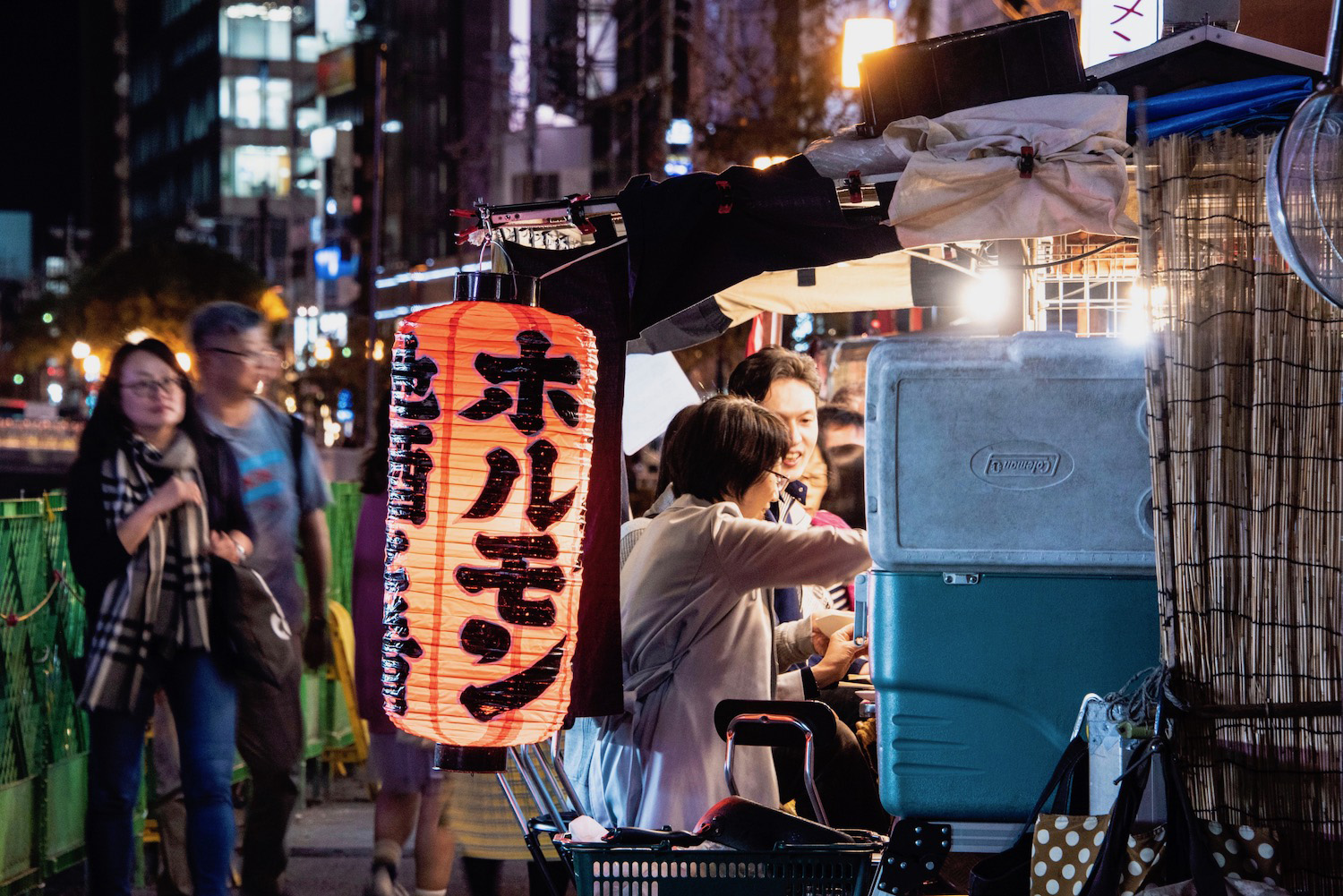
It was clearly just an ordinary one that had been haphazardly ripped off, though it seemed to have taken on the precise shaped of Queen’s Head, an iconic but impossibly disappointing piece of Taiwanese geology. I sat on the railing and gazed down at the city, feeling accomplished, but also resigned: The Fukuoka yatai were all I had to look forward to—he wasn’t going to say a single word to me.
Ghastly Guitar Gals
This fact was still true as I emerged from Nakasukawabata station and began walking westward toward the Naka River, along whose east bank the food stalls were reputed to sit. I say “reputed” because I’ll be honest: They were easy to miss, if you weren’t looking.
A friendly lesbian couple, whom I later discovered were visiting from Taiwan like me, agreed. “Are you sure there aren’t more yatai around here?” the more talkative one asked as I was setting up my tripod to photograph the stall, which I indeed had little desire to experience as a diner. (The food looked ordinary—the style of service was what stood out, and I found it more interesting to document that than to delight in.)
I laughed. “Yeah. A bit anti-climactic, right?” As the happy couple wandered off (happy, of course, because they were on a trip together and not ripping each other’s hearts out of their chests—not necessarily because of the Fukuoka yatai), I tried to come to terms with my own anti-climax. I tried to realize (or, at least, to wish) that the last traces of dopamine he made in me washed down the drain with my hallucinations about Robert Palmer and his ghastly guitar gals.
Other FAQ About Visiting Fukuoka
Where is Yatai in Fukuoka?
Fukuoka’s Yatai food stalls are located on Nakasu island, which is roughly halfway between Hakata Station and the ruins of Fukuoka Castle. One thing that surprises many travelers to Fukuoka is how relatively few Yatai exist, and how relatively uncrowded they are.
What can I eat in Fukuoka besides ramen?
If you want to eat an excellent meal in Fukuoka and aren’t in the mood for ramen, head to the Yatai food stalls that sit on the western side of Nakasu island right along the water. Beyond this, Fukuoka city is full of pan-Japanese restaurants that serve foods ranging from sushi, to yakitori, to tempura.
What can I do in Fukuoka at night?
The most popular thing to do in Fukuoka at night is to visit the Yatai, which are raucous and picturesque riverside food stalls on Nakasu island. Beyond this, there’s plenty of nightlife near Hakata Station, in particular to the southwest of the main station area.



